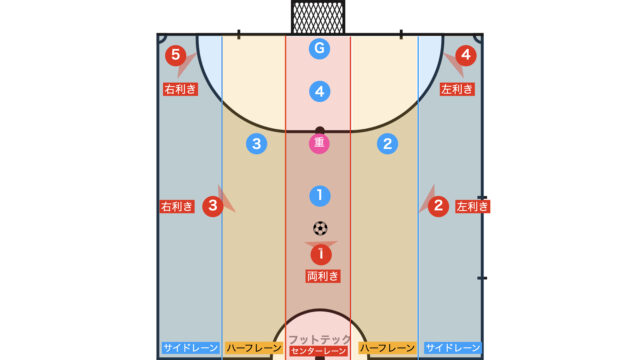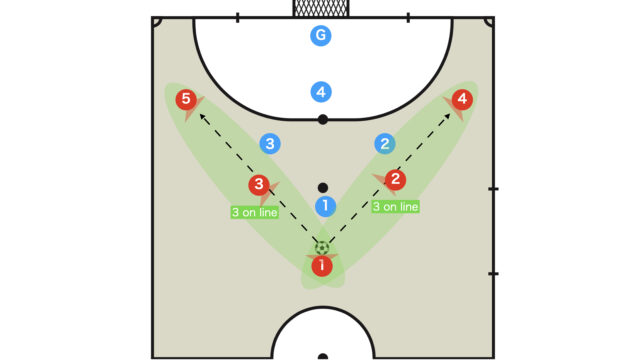There are various formations for power plays, but among them the box formation is very simple while still providing a decent level of attacking power, making it a widely used tactic.
If you were asked to introduce only two formations to your team, this would undoubtedly be the one everyone would choose.
This article provides a thorough explanation of the power play box formation.
Formation and Body Orientation
The box formation is a 2-1-2 setup, with one player positioned in the middle (between the lines) of the rectangle (box).
Even within the box formation, there are two patterns, which will be explained separately.
Pattern with Close Rear Spacing
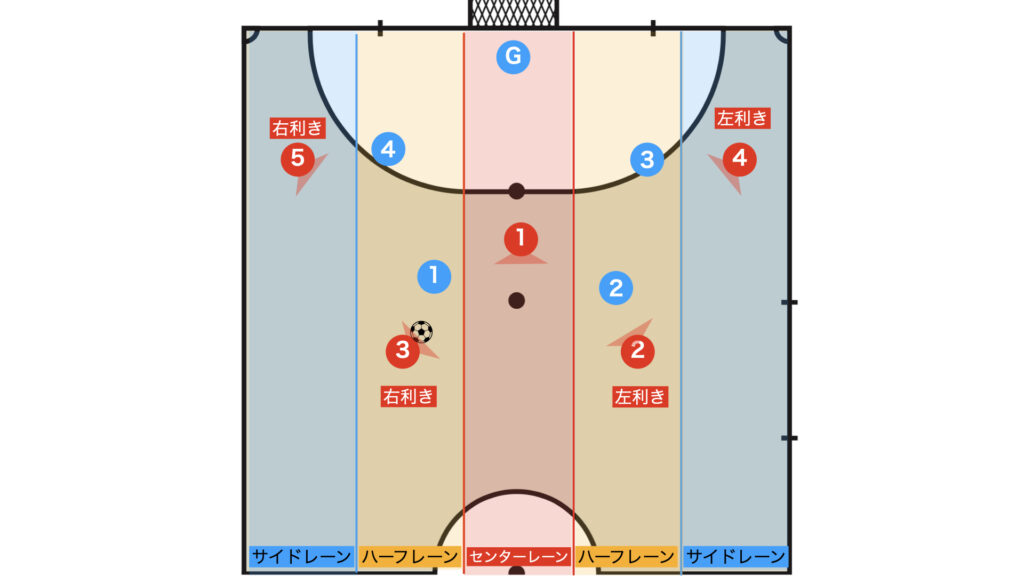
The benefit is that with all five players occupying separate lanes, passing lanes are consistently secured.
Pattern with Wider Rear Spacing (Taking Width)
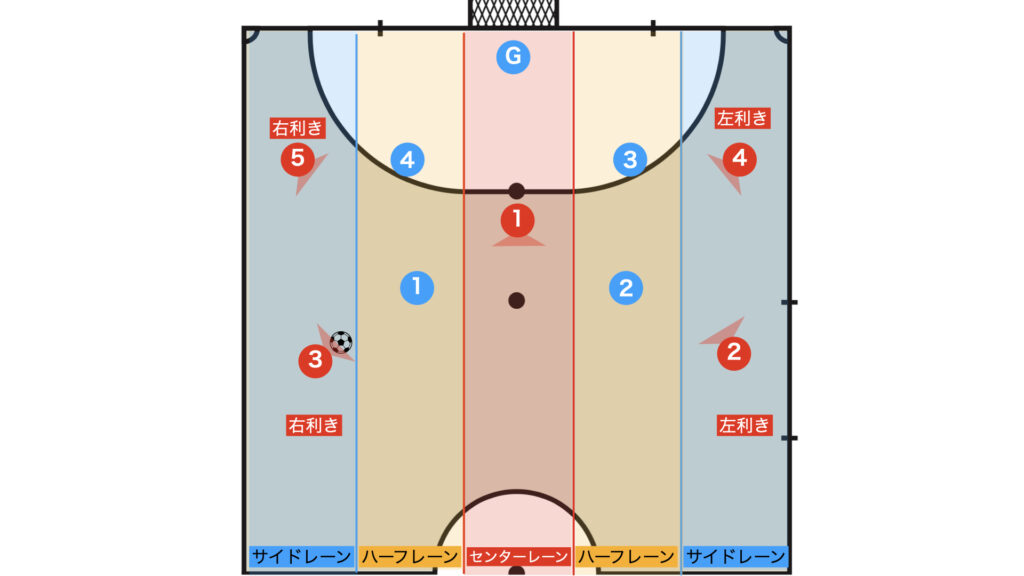
It is a rectangular formation where everyone takes up width.
With the increased distance between the two rear players, the opposing defense finds it harder to coordinate their coverage.
Tactical Intent
In simple terms, the main aim is to create a numerical or positional superiority.
Specifically, the tactic focuses on utilizing blocks or the spaces between the lines.
Exploiting Numerical Advantage
3 vs. 2 in the Third and Second Rows

Since most teams defend against this box formation with a box setup (2-2), a numerical advantage can be created in the third row (rear) and second row.
Localized Numerical Advantage of 2 vs. 1
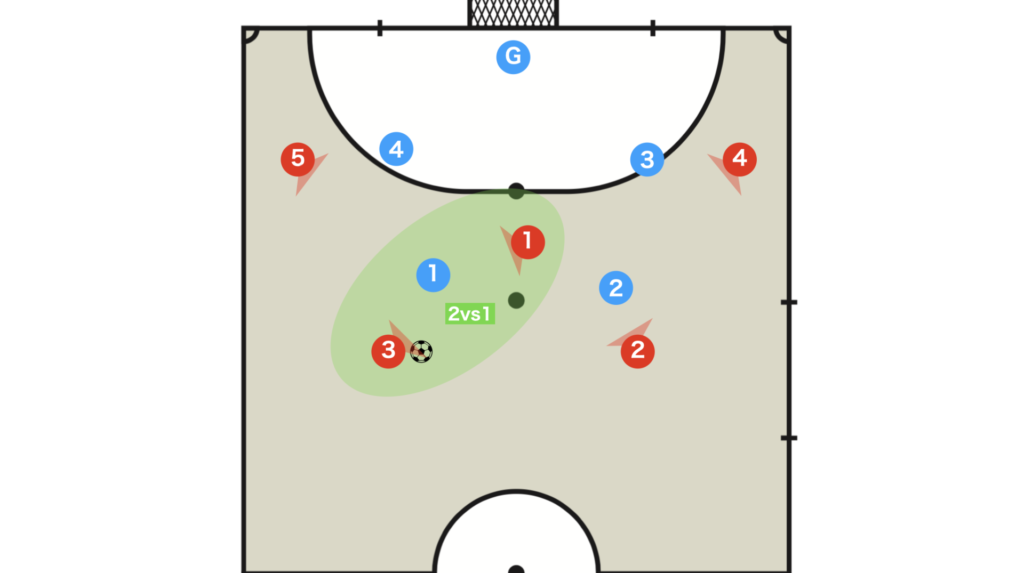
By focusing on smaller spaces, a 2 vs. 1 numerical advantage is achieved, and exploiting this advantage along with the use of blocks is one of the objectives.
Utilizing Positional Advantage (Between the Lines)
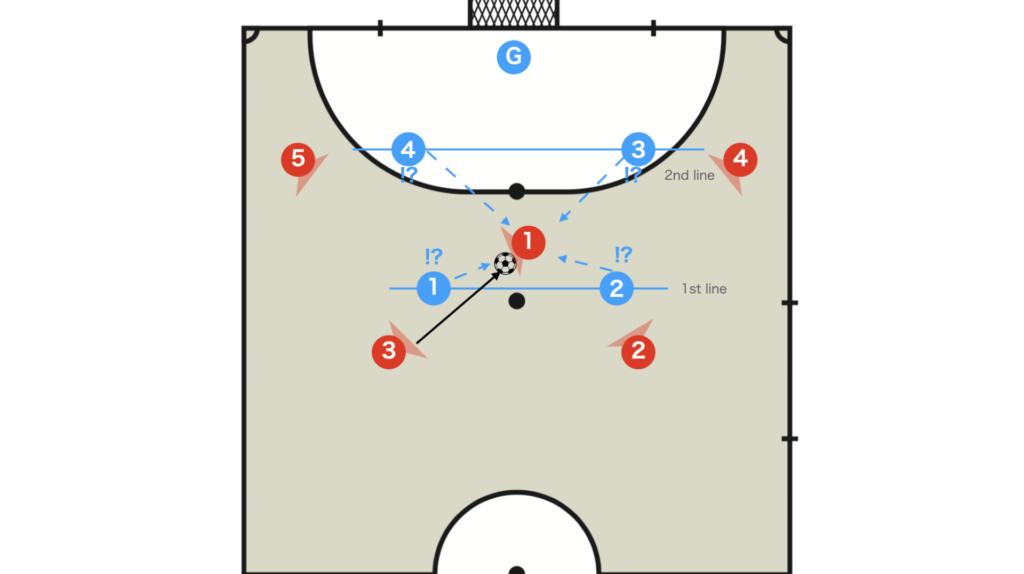
Receiving the ball in the space between the lines (entrelinhas) can confuse the opposing defenders, which is another objective of this tactic.
Possession
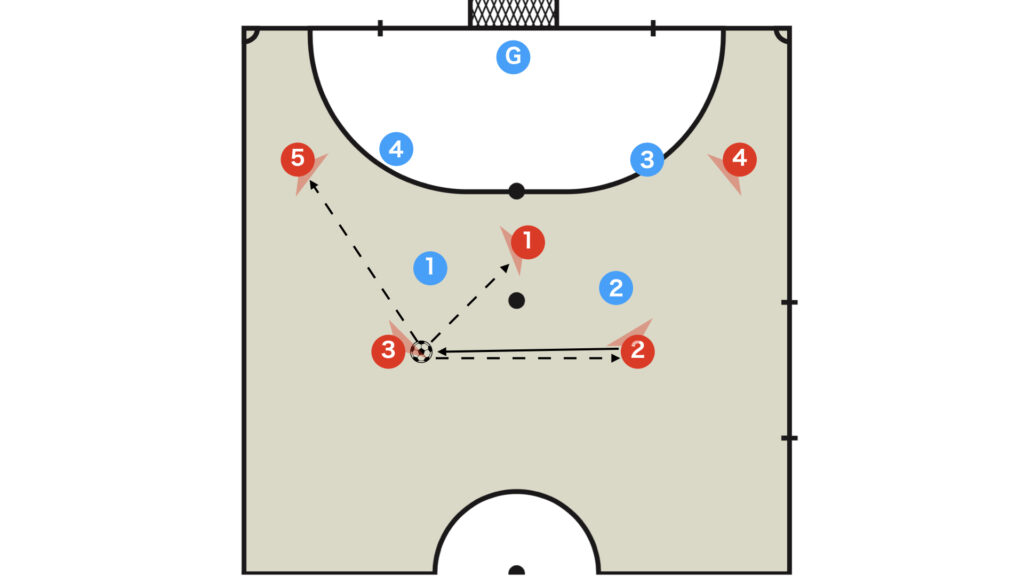
Basically, the tactic involves circulating the ball among the four outside players, excluding Red 1, to confuse the opposing defense.
When the defense shows signs of a lapse, a quick transition is made to finish the play.
Breaking Down the Defense
The methods for breaking down the opposing defense and finishing the play are broadly divided into two approaches: using blocks and utilizing the spaces between the lines.
Utilizing the Spaces Between the Lines
Since the spaces between the lines are always under close scrutiny and subjected to intense pressing, players operating there must possess high situational awareness and technical skill.
If a player can calmly connect the play from between the lines all the way to finish, it can present a significant scoring opportunity, given their proximity to the goal.
When Rear Spacing is Close: Vertical Block & Continue
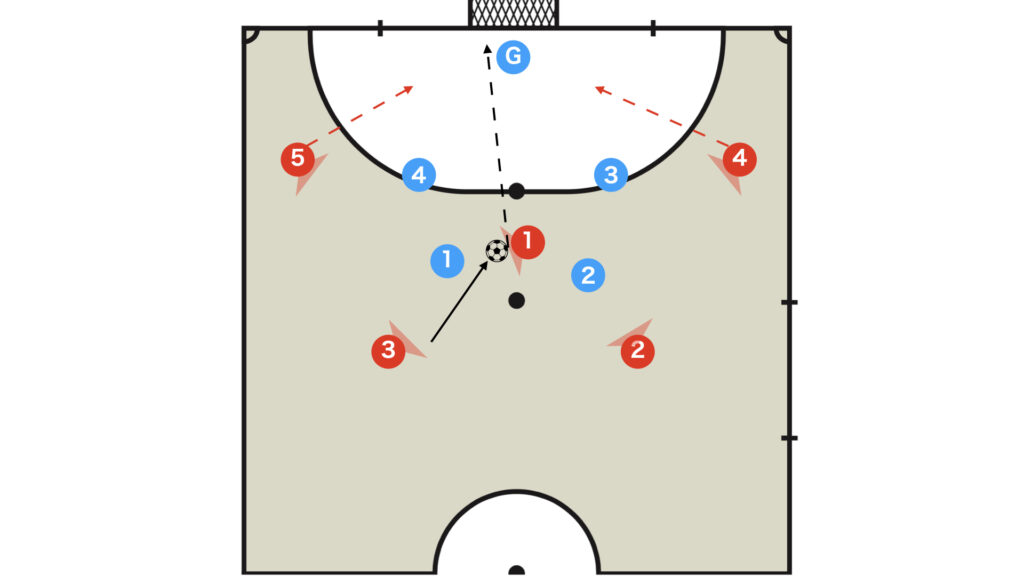
- Red 1 blocks Blue 1 from behind
- Red 3 dribbles vertically
- Red 1 continues
This causes the opposing defense (Blue 4) to be drawn out, thereby creating a localized numerical advantage of 3 vs. 1.
When Rear Spacing is Wide: Lateral Block (& Continue)
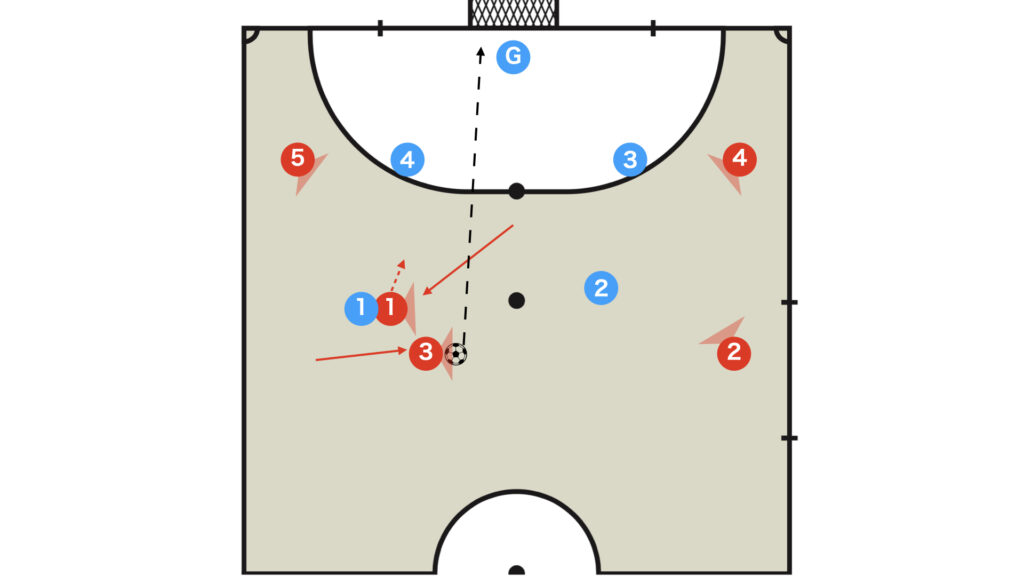
In the case of a lateral block, a simple cut-in followed by a shot is attempted.
If the shot is not successful, an ankle pass to Red 1, who has continued, can also be an effective way to break down the defense.
Conclusion
What do you think?
Utilizing the spaces between the lines is somewhat challenging, but employing blocks is a tactic that can be easily executed by any team.
It is recommended to gradually incorporate this into the team, starting with sign plays (jogata).
Thank you very much for reading this article to the end.
If you found this article useful, please consider sharing it using the social media share buttons above.
We regularly share valuable insights on futsal tactics on Twitter, so if you haven’t followed us yet, we’d appreciate your support!
We are committed to raising the level of futsal in Japan by sharing high-quality information through discussions with individuals who have coaching experience in the F.League and overseas.
If you have any questions or notice any mistakes, feel free to leave a comment below.
We update our articles regularly, so if you’d like to keep reading, please bookmark our site or search for “FutTech”!
